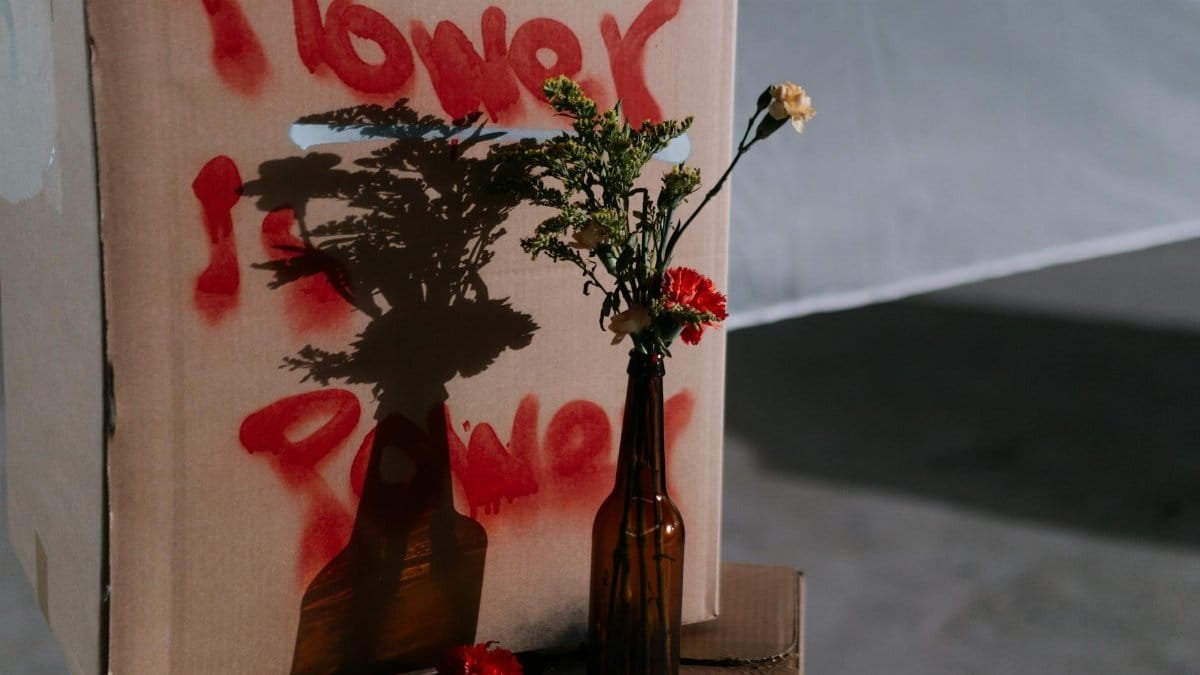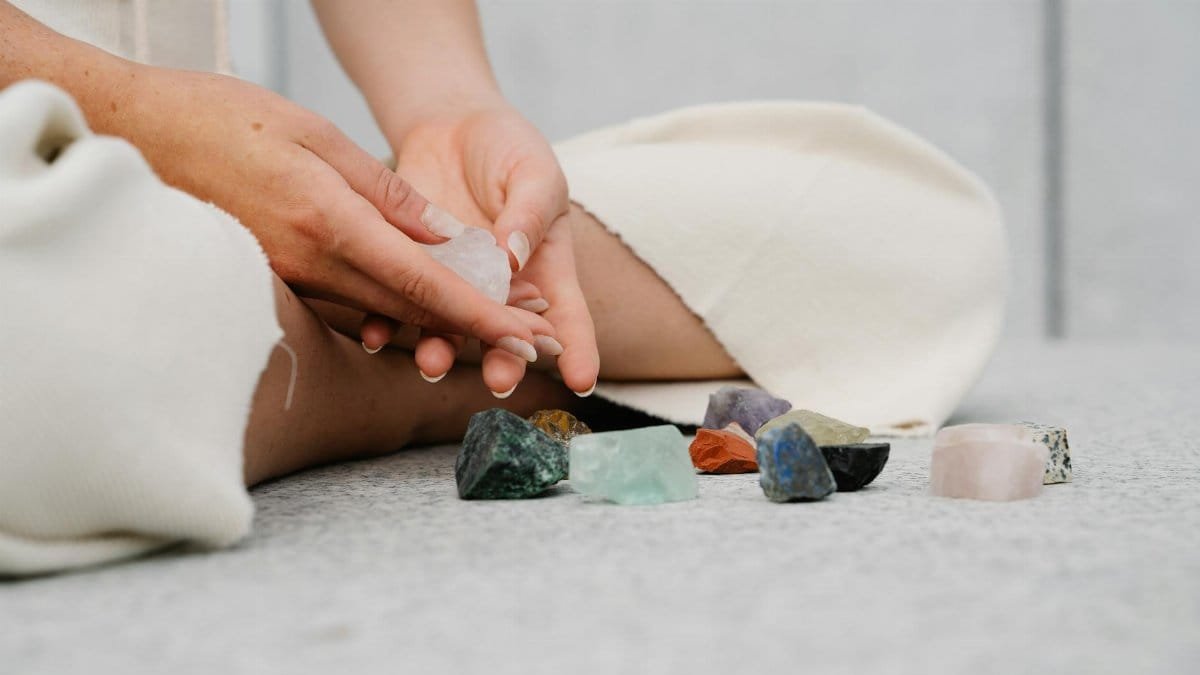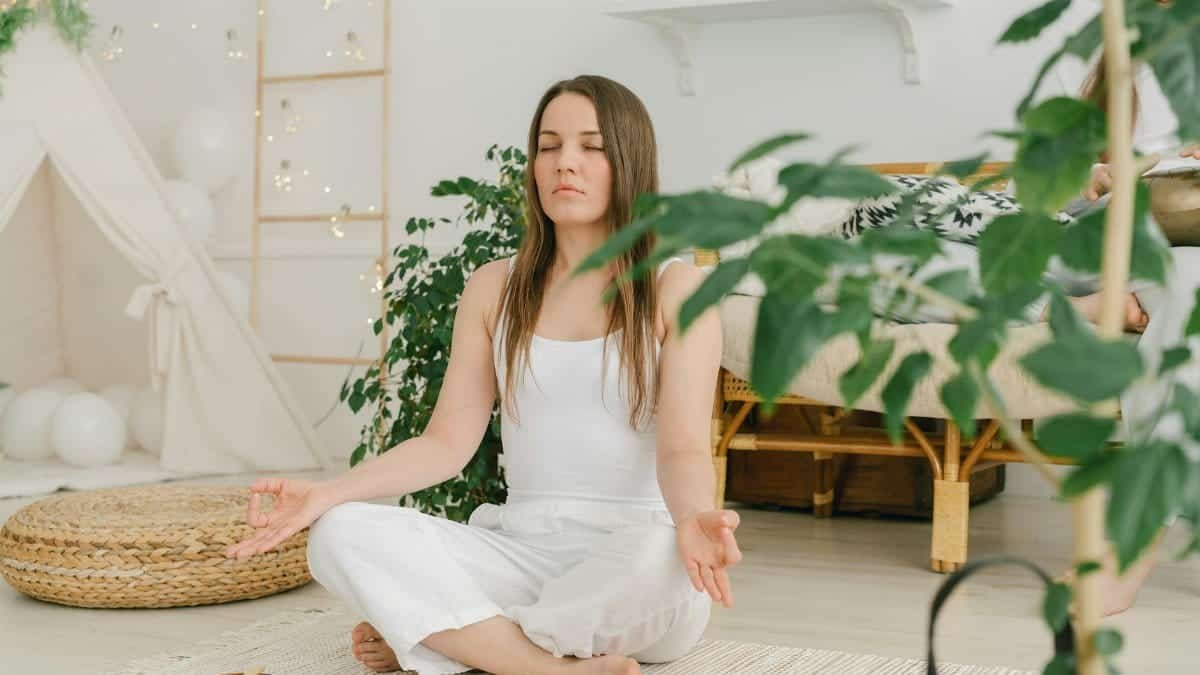Walk into a coffee shop in Portland or scroll through social media feeds in 2025, and a quiet shift becomes hard to miss. Tarot cards are casually flipped at tables. Friends discuss “manifesting” their goals with the same seriousness once reserved for prayer. Across the U.S., new age beliefs replacing religion are no longer just quirky sidelines—they’re filling a void for millions seeking meaning outside traditional pews. This isn’t a sudden rebellion against faith but a gradual drift, one fueled by a hunger for personal empowerment and connection in an uncertain world. From mindfulness apps to crystal healing, these practices are reshaping how Americans define spirituality. What’s driving this change? And what specific beliefs are stepping into the space once held by organized religion? Let’s unpack 12 distinct “New Age” ideas gaining ground, each reflecting a unique facet of this cultural pivot.
1. Astrology as Personal Guidance

Americans have long glanced at horoscopes for fun, but now, many turn to astrology for deeper insight. Apps like Co-Star report millions of users, offering daily readings that feel like bespoke advice. It’s not just entertainment—it’s a framework for understanding identity and relationships, often replacing the moral compass once provided by religious texts. A woman in her 40s, overheard at a Brooklyn diner, summed it up: “My horoscope helps me decide when to push forward or step back. It’s like having a guide.” Data backs this up— a 2021 Pew Research study found that nearly 30% of Americans believe astrology holds some truth, a notable uptick from prior decades. For many, the stars offer a personalized spirituality without dogma.
This shift isn’t without tension. Critics argue it’s superficial, lacking the communal depth of religion. Yet, its accessibility—anyone with a phone can check their chart—makes it a go-to in a fast-paced era.
2. Crystal Healing for Emotional Balance

Walk into any wellness store, and shelves brim with amethyst and rose quartz, each promising specific energies. Crystal healing, rooted in the belief that stones channel vibrations to heal or protect, has surged in popularity. It’s not uncommon to see someone clutching a small obsidian during a stressful meeting, seeking calm. Retail sales of crystals have skyrocketed, with market estimates reaching $1 billion annually in the U.S. by 2025. For believers, these objects replace religious relics as tangible links to the unseen.
Skeptics call it pseudoscience, pointing to a lack of empirical evidence. Still, the tactile nature of holding a stone offers a grounding ritual, something traditional religion often provided through prayer beads or crosses. It’s less about proof and more about feeling anchored.
3. Manifestation and the Power of Thought

What if you could think your way to a better life? That’s the core of manifestation, a belief that positive intentions can shape reality. Popularized by books like “The Secret” and viral TikTok videos, it’s become a secular gospel for many. Instead of praying for divine intervention, people write affirmations or visualize goals, trusting the universe to respond. A recent survey by YouGov found that over 40% of younger Americans have tried manifestation techniques.
This belief swaps religious surrender for personal agency. Yet, it’s not without pitfalls—critics warn it can breed entitlement or ignore systemic barriers. Still, its allure lies in control, a stark contrast to waiting on a higher power.
4. Mindfulness as Sacred Practice

Mindfulness, once a niche meditation practice, now rivals Sunday sermons for many. Apps like Headspace boast tens of millions of users, guiding daily sessions to center the mind. It’s not just stress relief; it’s a spiritual reset, filling the quiet reflection once found in church. Unlike religion’s focus on afterlife rewards, mindfulness roots people in the present.
Its rise ties to a broader cultural need for calm amid chaos. Research from NIH shows mindfulness can lower anxiety measurably. For those drifting from faith, it offers a ritual without rules, a sanctuary in breath.
5. Tarot Cards for Life’s Answers

Tarot decks, once tied to fortune-telling stereotypes, now sit on nightstands as tools for introspection. A spread of cards might guide a career decision or unpack emotional baggage, much like confession once did. Online sales of tarot decks have spiked, with Etsy reporting a 300% increase in searches since 2019. It’s less about predicting the future and more about framing the present.
For some, tarot replaces religious counseling. It’s private, immediate, and doesn’t demand belief in a deity—just an openness to symbols. Detractors see it as escapism, but users describe a clarity that feels sacred.
6. Energy Healing and Reiki

Reiki, a Japanese practice of channeling energy through touch, has found a foothold in American wellness circles. Practitioners claim to clear blockages, promoting physical and emotional healing. Sessions often mimic the laying on of hands in religious traditions, but without a divine intermediary. The National Center for Complementary and Integrative Health notes growing interest, though evidence remains anecdotal.
Its appeal is intimacy—a direct, human connection to healing. For those skeptical of organized faith, it offers a spiritual experience grounded in personal interaction, not scripture.
7. Human Design as Identity Blueprint

Imagine a system blending astrology, the I Ching, and quantum mechanics to map your life’s purpose. That’s Human Design, a newer belief gaining traction. It offers detailed “charts” defining how someone should live, love, and work. Online communities buzz with people sharing revelations from their readings, often anonymously describing it as “finally understanding who I am.”
This personalized approach mirrors religion’s promise of purpose but skips the one-size-fits-all doctrine. It’s a modern oracle, tailored to an era craving self-discovery over conformity.
8. Sound Baths for Soul Cleansing

In studios from Los Angeles to Chicago, groups lie on mats as gongs and singing bowls wash over them. Sound baths, billed as vibrational therapy, aim to cleanse negative energy. Participants often liken the experience to baptism—a renewal without water or clergy. Attendance at such events has surged, reflecting a desire for communal spiritual experiences outside church walls.
The effect might be placebo, but the shared silence and resonance create a tangible bond. It’s a ritual of release, echoing religion’s catharsis without requiring belief in the divine.
9. Plant Medicine and Spiritual Journeys

Ayahuasca retreats and psilocybin ceremonies, once fringe, are entering the mainstream as paths to transcendence. Legal in some states, guided mushroom trips promise insights akin to religious epiphanies. A 2023 study from Johns Hopkins University found many participants report lasting spiritual shifts post-experience.
This isn’t casual drug use—it’s a deliberate quest for connection, often replacing traditional rites of passage. Risks remain, but the draw is undeniable: a direct encounter with something bigger.
10. Ancestral Worship and Past Lives

More Americans are exploring ancestral veneration or past-life regression, seeking links to histories beyond their own. Workshops on connecting with “spirit guides” or recalling prior existences offer a sense of continuity once provided by religious lineage. It’s less about heaven and more about roots, whether literal or imagined.
This practice speaks to a need for belonging in a disconnected age. It’s personal archaeology, piecing together identity through stories—real or felt—that rival religious narratives of origin.
11. Ecospirituality and Earth Worship

For some, the divine isn’t above but beneath their feet. Ecospirituality, revering nature as sacred, has grown alongside environmental concerns. Rituals might involve moonlit hikes or offerings to the earth, echoing pagan traditions but often stripped of formal religion. It’s a spirituality of stewardship, not salvation.
In 2025, as climate anxiety mounts, this belief offers solace and purpose. It reframes humanity’s role, swapping dominion for partnership with the planet—a shift from traditional religious hierarchies.
12. Digital Altars and Virtual Rituals

Spirituality has gone online, with virtual meditation circles and digital “altars” on platforms like Instagram. People curate grids of inspiring images or join livestreamed solstice celebrations, building sacred spaces in pixels. It’s a far cry from stained glass, yet it meets the same need for ritual and community.
This trend reflects how new age beliefs replacing religion adapt to modern life. Technology doesn’t dilute the sacred; it redefines it, making transcendence just a click away for those untethered from physical houses of worship.
As these 12 beliefs weave into daily life, they reveal a broader truth: Americans aren’t abandoning spirituality—they’re reimagining it. New age beliefs replacing religion offer flexibility and individuality, stepping into gaps left by declining church attendance. Yet, questions linger. Can these practices sustain the depth of community or moral grounding religion once provided? Or are they fleeting trends in a restless search for meaning? For now, they’re reshaping the spiritual landscape, one crystal, chart, and chant at a time.
